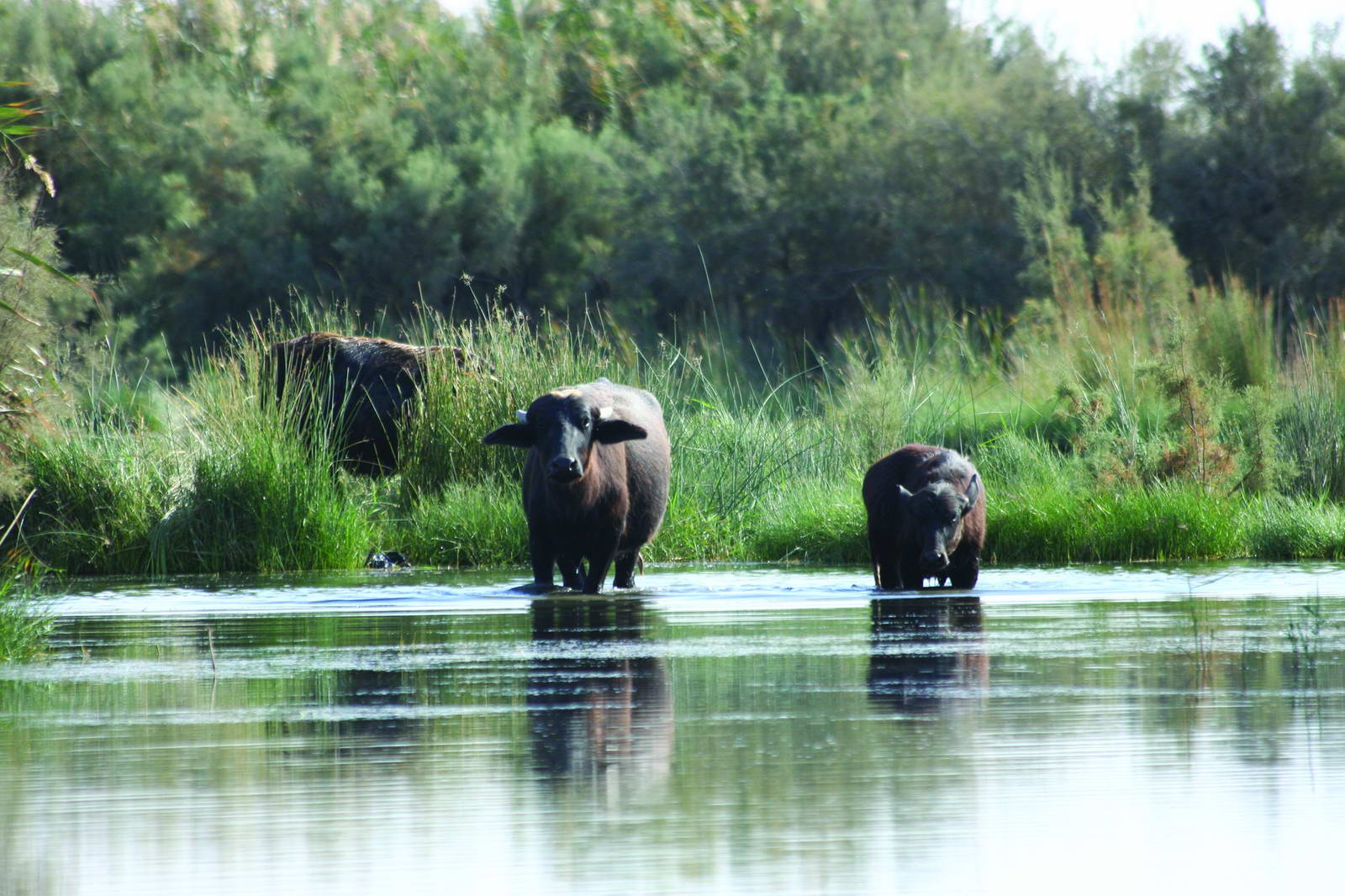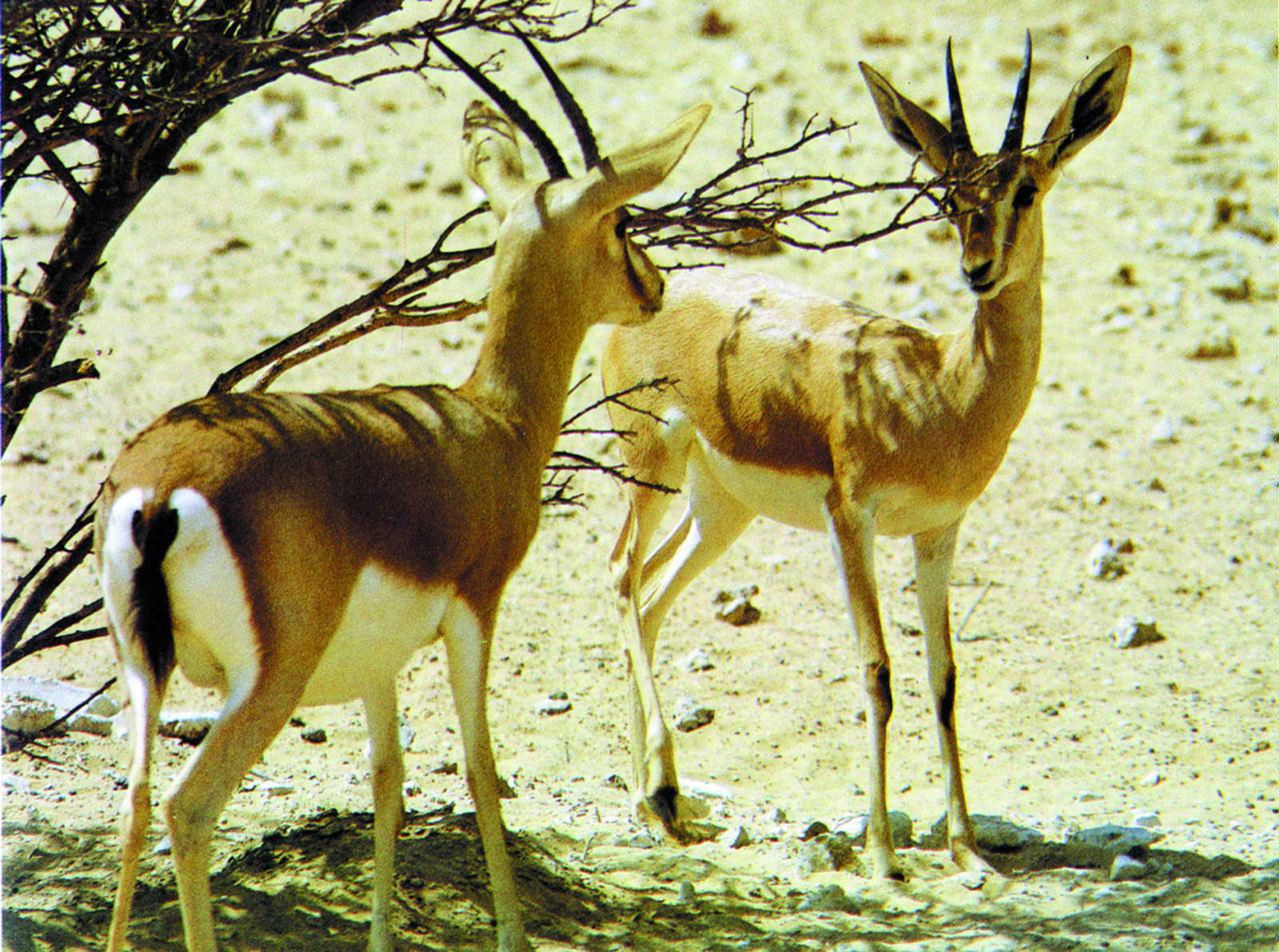There are at present six nature reserves in Jordan organized and managed by The Royal Society for the Conservation of Nature (RSCN). They have recently launched a national program to establish further protected areas in Jordan, to join the six nature reserves already operational in the country.
The suggested new areas are the Yarmouk River gorge north of Umm Qais, the Burqa desert Mudflats in the north-east, the FiFa Area along the south east Dead Sea coast with its freshwater spring and oases full of subtropical vegetation, and the Jordan River gorge north of the Dead Sea, representing one of the last remaining natural stretches of the Jordan River that has been protected for decades, and thus still has indigenous wildlife such as the Syrian wolf.
Besides Wadi Rum, the present Nature Reserves are:
Dana Nature Reserve: a system of Wadis and mountains with spectacular wildlife.
The Mujib Reserve, the deep gorge that flows from the Jordanian highland to the lowest spot on earth at the Dead Sea.
The Azraq Wetlands Reserve a marsh and lake area that attracts migrating birds from Asia and Africa.
The Shaumari Reserve with its herds of gazelles, oryx, ostriches, and other indigenous animal species.
The Ajloun Reserve in north West Jordan

Ajloun Reserve: The Ajloun Reserve was established in 1988 and covers 13 square kms. It is located in the Ajloun Highlands around the long Ain Zubia Valley and is a Mediterranean hill landscape mainly with open woodland of oak and pistachio trees. It was established in 1988 in another area where a captive-breeding program for the roe deer was begun and was later moved 12 kilometers northwest. Hikers, campers and picnickers are welcomed. These woodlands are like the original forest which once covered most of northern Jordan and there is a remarkably similar area close to Petra, at Hisha in the hills near to Shobak, which is also popular with local picnickers on Fridays.
The area has a long history of human settlements, due to its Mediterranean climate, dense forests, and fertile soil. This rich history is reflected in the many archaeological ruins scattered in the woodlands and surrounding villages. In the village of Tubna, you will find a Zeidanian mosque and meeting hall dating back to 1750 A.D.
Ajloun Forest Lodge : The Ajloun Campsite is on the edge of the forest in the Ajloun Nature Reserve in the north of Jordan. It occupies a large grassy clearing, enclosed by oak, pistachio and strawberry trees and offers beautiful views of the reserve and beyond. On clear days, you can see the west bank and the snow- capping Jebel Sheikh in Lebanon. There are 10 four- person tented lodges available with small terraces and beds inside. Shared showers and toilets are available, nearby, alongside the reserve centre, which offers a small restaurant, interpretation room, training room and the reserve management offices. The campsite is open mid March to mid November. Ajloun Campsite contains 10 tents (40 persons per night). Check in after 3:00 PM. Check out before 12:00 Noon.
The Reserve of Azraq: was established in 1978. It is located in the eastern desert and covers 12 square kilometers, The Nature Reserve is close to Azraq al Janubi, and perhaps 3 kms from the Castle of Azraq.
The oasis of Azraq is probably the best known of the older reserves. The word Azraq means "blue" in Arabic and before water pumping began in the 1980s the oasis provided "a sparkling blue jewel" in the desert. Underground water flowing down from Jebel Druze in Syria surfaced here and the slightly older guide books speak of it as a marsh that sheltered up to half a million migrating birds at any one time. In recent years this changed drastically as the towns of Irbid and later Amman drew heavily on the water here and by 1994 the marsh was all but destroyed. However more recently still an alternative source of water has been found in the aquifer of Dissieh and water is gradually being pumped back into the marsh.
Dana Nature Reserve: is a system of wadis and mountains, which extend from the top of the Rift Valley down to the desert lowlands of Wadi Araba, an elevation drop of over 1600 meters.
It embraces two major biogeographical zones and four distinct vegetation zones and contains a remarkable diversity of landscapes, ranging from wooded highlands and rocky slopes to gravel plains and sand dunes. It supports a wide variety of wildlife, including many rare species of plants and animals.
The total number of species recorded so far consists of 697 plants, of which 3 are new to science, and 282 animals. Many of these are now very rare and some threatened with extinction: animals like the Grey Wolf, Nubian Ibex, the Lesser Kestrel, Eagle Owl and the Desert Monitor Lizard. So far, 45 endangered or vulnerable animals have been found in the reserve, making it truly a place of world importance. Apart from its wildlife, Dana is also rich in archaeology and culture. About 100 archaeological sites have been identified, of which the ancient copper mines in Wadi Feinan are particularly special, being considered the most important archaeological complex in southern Jordan outside of Petra.
Hiking in Dana: Dana offers a selection of trails to key points of interest for both the casual and adventurous hiker. Four of the trails are clearly marked with intermittent piles of stones along the route, and can therefore be hiked independently or with an RSCN guide. The other two trails, which are longer and unmarked, must be hiked with a guide.
There is a wide variety of hiking trails, from short one hour circuits to day- hikes requiring an overnight in camps. All trails offer spectacular views and rock formations and some pass important archaeological sites, including the ancient copper mining centre of Feinan.
Shaumari Reserve: was established in 1975, covers 22 square kilometers and is the oldest of the reserves. It was created in 1975 for breeding endangered species.
It isn t far from Azraq, out in the desert about 12 kms from Janubi. Although the publicity makes it sound romantic, it is in fact completely flat and rather dusty (see above photo). A visitors centre tells the story of the reserve and a special shuttle takes up to 15 people to see the free-roaming herds. There is also a small picnic area and children s playground.
The big success of Shaumari is the oryx. Their breeding program got off to a slow start, but this was explained when somebody realized that there were no females in the breeding herd. Once this had been rectified things started moving, and last year there were over 200 animals. In fact this is starting to become something of a problem; the original idea was that they should be released into the wild, but the likely reaction of the local Bedouin has led to some hesitation over this. At the beginning of 2002 about 20 animals were transferred to a blind valley in Wadi Rum where they are under the surveillance of the Reserve rangers there. We ll see!
Other animals being bred successfully at Shaumari are the onager (the wild ass), the ostrich and the ibex or gazelle. Several countries have donated breeding stock and the breeding enclosures provide a small zoo for visitors making it a popular spot for children and school outings. There is an observation tower, making it possible to watch the animals without trudging through the desert dust. You can also "adopt" an oryx if you like!
Some of the wildlife here are the Cape hare, red fox, gerbil and even the striped hyena and the wild cat. The entrance fee is 2JD for Shaumari alone, or 3JD for both Azraq and Shaumari.